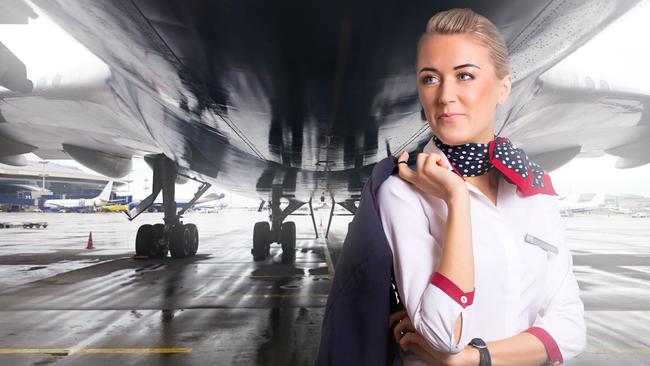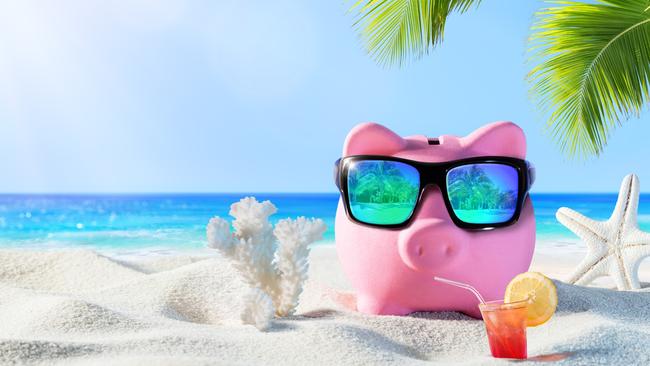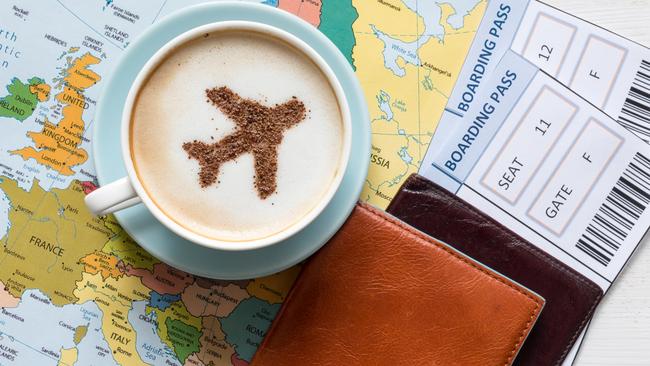How to travel the world for 90% less: join the crew
Want a cheap weekend in NZ or a budget break in Britain? Here’s the secret to snaring budget travel.

Paris for the weekend. A day on a beach to escape winter. Never been to Montenegro or Tahiti or South Dakota? Let’s go, go, go.
Just work for an airline. Most let their employees fly standby free of charge and their competitors’ staffers for close to free.
Children, parents and retirees get some flight perks, too.
It just might be the best work privilege of all time. (Don’t call it a benefit: It doesn’t get taxed.) In no other industry do companies extend generous perks to competitors’ employees.
It would be like Ford giving free cars to all employees and 90 per cent-off discounts to General Motors labourers.
More than 200 airlines around the world have agreements allowing competitors’ employees, from accountants to warehouse clerks, to ride standby, sitting in any open seat for about 10 per cent of the cost of a ticket.
The perk of pass travel creates a different lifestyle for airline employees when they take advantage liberally. Even if employees rarely travel, just knowing they could go to London for the weekend or New Orleans for lunch is a powerful bonus.
Flexible, and almost free
“My wife has told me many times: If you decide to quit Hawaiian Airlines or if you get fired, I’m divorcing you,” says Damian Balinowski, Hawaiian’s manager of internal communications, who takes frequent trips to Europe and weekend hops to Maui. “The thing we both cherish is the flexibility.”
Employee standby travellers, known as “nonrev” or “nonrevenue” passengers, employ strategies that would make even the most seasoned road warrior blush.
With backup plans B, C, D and E at the ready, they check in for three and four flights at the same time, hoping to get on one. They wait to book hotels or Airbnbs until planes start taxiing because there is always a danger of getting bumped out of a seat at the last second.
They are also a big reason why the empty seat next to you gets filled just before the aircraft door closes.
During his first year at United Airlines, Jaspreet Singh stayed home in Chicago only four weekends out of 52. In the three years he has worked at the airline, the senior analyst for in-flight entertainment has taken 500 flights covering 700,000 miles.
Sometimes Mr Singh, 25 years old, jets to Kansas City to mow the lawn for his mother.
Other times he goes to London, Brussels or any city in Germany he can get for the weekend. He flies to the West Coast to escape winter cold. An avowed aviation geek, he likes to planespot at an In-N-Out Burger adjacent to the flight path for Runway 24R at Los Angeles International.
“I’ll just show up at the airport, look at the departure list and see what has the most open seats,” he says.
Southwest, a favourite of nonrev travellers for its frequent flights and lighter passenger loads, has flown nearly two million nonrevenue passengers this year, through July 15.
About 1.5 million were Southwest employees or dependants, and a further 487,000 were employees of other airlines, according to Rob Dusseau, Southwest’s senior manager for employee engagement and travel.
Southwest doesn’t have code-share marketing alliances with other airlines or interline agreements that move cancelled or bumped passengers to other carriers. But it does have deals with 140 airlines for employee travel.

“It’s pretty impactful to people’s lives,” says Mr. Dusseau, who has managed pass travel at Southwest for 20 years and currently leads an industry association of pass-travel managers.
He gets around himself: 46 flights so far this year for leisure travel totalling 45,651 miles. When going to Europe for the weekend, he’ll leave Thursday night and take Friday off, maybe Monday, too.
“I just think I’m going to have some awesome memories when I get older,” he says.
Why the perks?
There are varying theories on how all this began. Historically, airlines filled only three-quarters of their seats, on average, so they could attract people to the sometimes low-paying industry with free travel.
Some industry long-timers think carriers wanted office workers to experience the product and track competitor innovations. Airlines also wanted to make it feasible for workers to commute to jobs, as they do today, by flying.
The tradition gives airline employees flexibility that paying customers rarely have, such as adding a stop impulsively or staying a few days longer. Employees do have to pay taxes and government fees on international tickets. When flying competitors, they pay what is called a ZED fare, for Zonal Employee Discount, based on distance. ZED fares start at $15 and top out for flights halfway around the world at $179.
These days airlines are filling more seats and flying standby is more challenging. Airlines say nonrevenue employees typically get lower standby-list priority than paying customers, though some top executives and crew members needed to fly a trip can jump ahead. At many airlines, seniority determines the standby-list order for employees. At others, it is check-in time. Employees of other airlines always fall below an airline’s own employees.
With seats hard to score, nonrev travellers study bookings and track trends, such as which flights tend to fill up just before departure. Employees have access to bookings at their own carriers and apps that show available seats on others or predictions for standby success.
“There’s some energy and excitement behind the strategy and the game of nonrevving,” says Mr. Dusseau of Southwest.

Frequent nonrev travellers all have stories of nights spent sleeping on the floor of an airport or crazy routings they took to get home in time for work. Mr Singh got himself back to Chicago from Honolulu one time via Los Angeles, Newark and Milwaukee. A trip home from Tahiti for Hawaiian’s Alex Da Silva meant flying 4350 kilometres past the islands to Los Angeles and then Las Vegas before backtracking to Honolulu.
Amazing race
JetBlue employees addicted to the game of “nonrev” travel created their own Amazing Race-style competition in 2017. Three teams of three people get handed a destination at 3pm on a Friday at the airline’s New York headquarters.
Eric Tanner, a network planner for JetBlue and creator of the competition, has won both races so far. The inaugural destination was San Sebastian, Spain, and Mr. Tanner figured the whole game was getting to Spain first. His team checked in for flights from New York to Madrid on Iberia and American, stationing team members at different gates in different terminals. An Iberia flight at 5.15pm looked fully booked but they tried anyway. Ten people didn’t show up and they were on their way.
JetBlue has one expectation of its nonrev employee passengers: They have to help clean the airplane after a flight. It is taught at orientation. When nonrev travellers board, they are handed a pair of blue gloves for cleaning.
“I view it as a fun part of the experience and a way to help out my fellow crew members,” Mr. Tanner says.
Maryanne Dao began to understand nonrev travel her first week at JetBlue, when her boss showed up on a Friday with a suitcase packed with bathing suits on one side and sweaters on the other. She was heading to the airport looking for an empty seat.
In just under four years Ms. Dao, an analyst in strategic sourcing, has been to 36 countries using nonrev travel. The week of the July 4 holiday she went to Bermuda for a few days then came back to New York to join colleagues on a trip to a beach in Montenegro. She left her Bermuda backpack at the airport and had clean clothes in a carry-on stashed in a closet for the European trip.
The peripatetic travel is exciting, and addicting, she says.
“I will continue to do this for as long as my body allows me to,” Ms. Dao says.



To join the conversation, please log in. Don't have an account? Register
Join the conversation, you are commenting as Logout